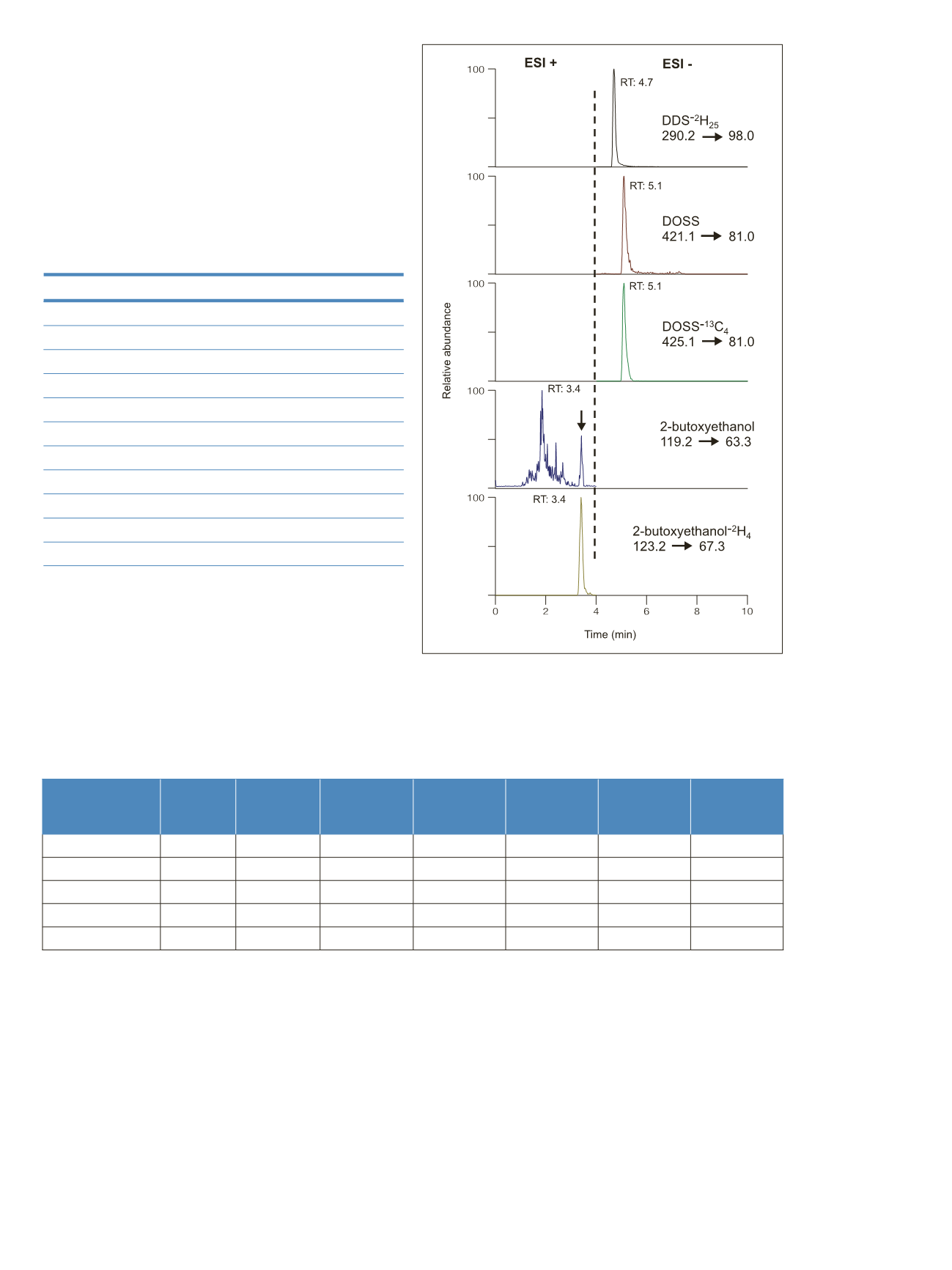

3
Mass Spectrometry
Detection of analytes was performed on a Thermo Scientific
™
TSQ Quantum Access
™
triple-stage quadrupole mass
spectrometer equipped with a Thermo Scientific
™
Ion
Max
™
API source with an electrospray ionization (ESI)
probe. The source was operated in positive ion mode for
the first 4 min of the chromatographic separation for the
detection of 2-butoxyethanol and 2-butoxyethanol-
2
H
4
and then switched to negative ion mode to enable
detection of DOSS, DOSS-
13
C
4
, and DDS-
2
H
25
. Optimized
MS parameters were as follows:
MS Parameters
Positive ion mode segment
Capillary voltage
4.5 kV
Tube lens
50 V
Auxiliary gas (N
2
)
15 arbitrary units
Negative ion mode segment
Capillary voltage
4 kV
Tube lens
-80 V
Auxiliary gas (N
2
)
Not used
Both segments
Capillary temperature
325 °C
Sheath gas (N
2
)
60 arbitrary units
Data were acquired in selected-reaction monitoring
(SRM) mode. Identities of the precursor and product ions
and the optimized collision parameters are provided in
Table 1. The flow from the LC was diverted to waste for
the first 1.5 min to prevent the accumulation of salts into
the mass spectrometer source. A typical chromatogram for
a spiked seawater sample is shown in Figure 3.
Table 1. Summary of the retention times, masses, and optimized
SRM parameters
Figure 3. LC-ESI-MS/MS chromatograms of DOSS and
2-butoxyethanol in seawater at spike levels of 0.778 µg/L and
2.56 µg/L, respectively, and their surrogates
Compound
RT
(min)
Parent
ion
(m/z)
Collision
Pressure
(mTorr)
Quantifying
ion
(m/z)
Collision
energy
(eV)
Qualifying
ion
(m/z)
Collision
energy
(eV)
2-butoxyethanol
3.4
119.2
0.8
63.3
5
45.4
9
2-butoxyethanol-
2
H
4
3.4
123.2
0.8
67.3
6
-
-
DDS-
2
H
25
4.7
290.1
1.5
98.0
42
-
-
DOSS
5.1
421.1
1.5
81.0
25
227.1
21
DOSS-
13
C
4
5.1
425.1
1.5
81.0
25
-
-



















